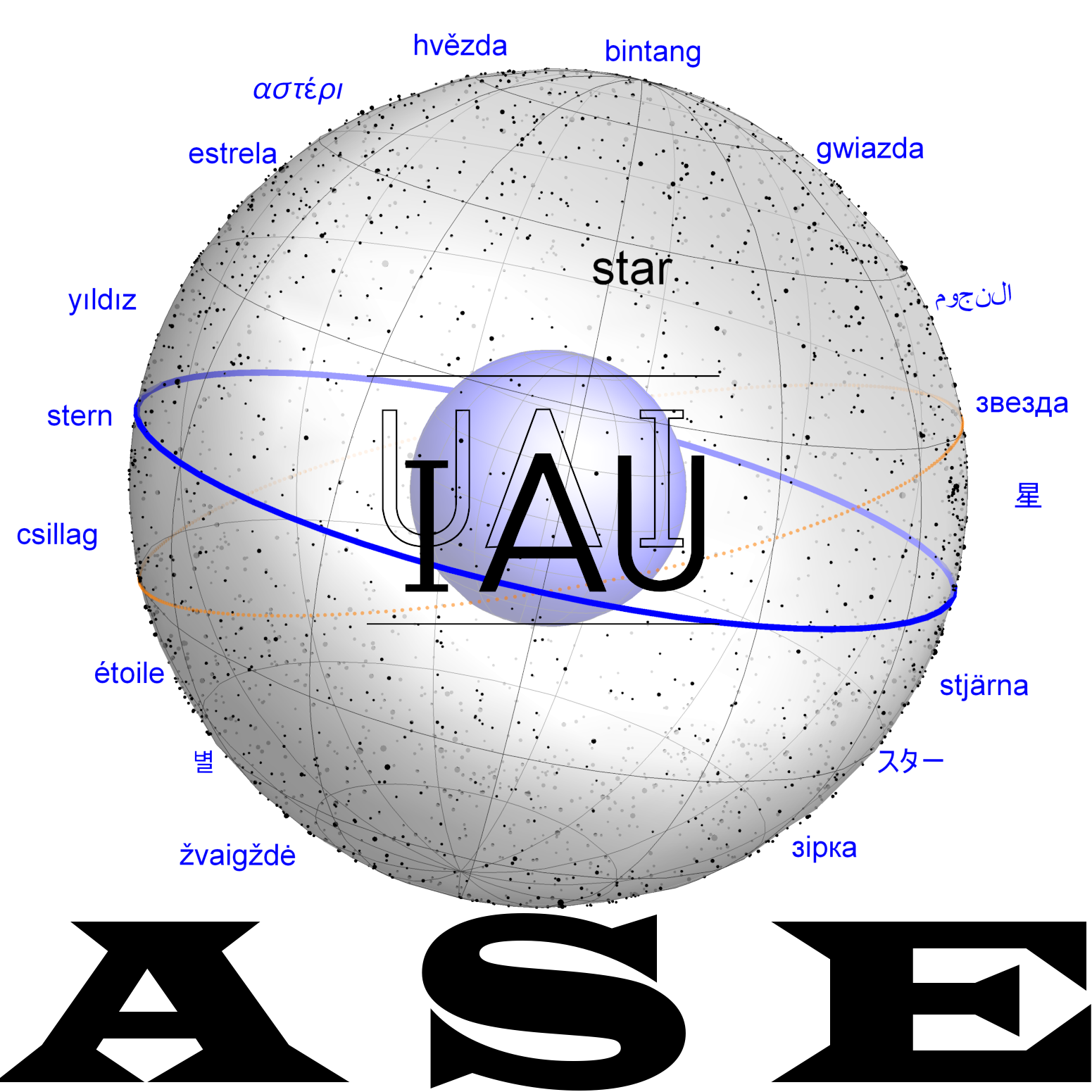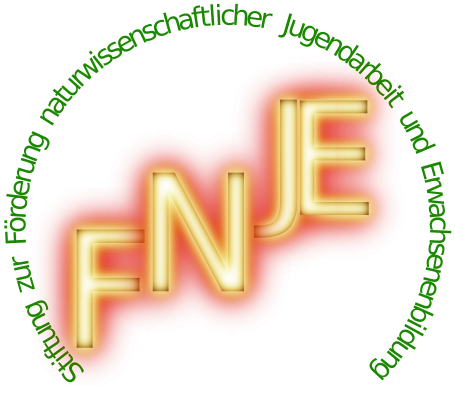GAN2.UR3: Difference between revisions
DavidHilder (talk | contribs) No edit summary |
DavidHilder (talk | contribs) No edit summary |
||
| Line 8: | Line 8: | ||
|- |
|- |
||
| '''Lexic. texts.''' |
| '''Lexic. texts.''' |
||
Urra XXII series: <sup>mul</sup>giš.gan<sub>2</sub>.ur<sub>3</sub> = maš-ka-ka-ti/tu<sub>2</sub> [SpTU III, 114A v 44; Bloch-Horowitz 2015, 109:301ʹ]. || Example |
Urra XXII series: <sup>mul</sup>giš.gan<sub>2</sub>.ur<sub>3</sub> = ''maš-ka-ka-ti/tu''<sub>2</sub> [SpTU III, 114A v 44; Bloch-Horowitz 2015, 109:301ʹ]. || Example |
||
|- |
|- |
||
| '''EAE.''' |
| '''EAE.''' |
||
| Line 14: | Line 14: | ||
|- |
|- |
||
|'''MUL.APIN.''' |
|'''MUL.APIN.''' |
||
List of stars of Ea (no. 6): MUL ša<sub>2</sub> ina A<sub>2</sub>-šu<sub>2</sub> GUB-zu <sup>mul giš</sup>GAN<sub>2</sub>.UR<sub>3</sub> <sup>giš</sup>TUKUL ša<sub>2</sub> <sup>d</sup>Mār(A)-bīti(E<sub>2</sub>) (in [G. 17], <sup>d</sup>A.MAL) / ša<sub>2</sub> ina lib<sub>3</sub>-bi-šu<sub>2</sub> ZU:AB i-bar-ru-u<sub>2</sub> "Constellation, which with it (ie. i.e. Entenabarchum) stands the Harrow, the weapon of Marbiti, within which Apsu can be seen" (I ii 23-24) [MA, 36-37]. List of stars VR 46, 1:25. <sup>mul giš</sup>gan<sub>2</sub>.ur<sub>3</sub> <sup>giš</sup>tukul ša<sub>2</sub> <sup>d</sup>A.E<sub>2</sub> ša<sub>2</sub> ina lib<sub>3</sub>-bi-šu<sub>2</sub> ABZU igi.kar<sub>2</sub> "The Harrow, the weapon of Marbiti, in which Apsu is seen" [HBA, 52; Wee 2016, 163-3]. |
List of stars of Ea (no. 6): MUL ''ša''<sub>2</sub> ''ina'' A<sub>2</sub>-''šu''<sub>2</sub> GUB-''zu'' <sup>mul giš</sup>GAN<sub>2</sub>.UR<sub>3</sub> <sup>giš</sup>TUKUL ''ša''<sub>2</sub> <sup>d</sup>''Mār''(A)-''bīti''(E<sub>2</sub>) (in [G. 17], <sup>d</sup>A.MAL) / ''ša''<sub>2</sub> ''ina lib''<sub>3</sub>-''bi-šu''<sub>2</sub> ZU:AB ''i-bar-ru-u''<sub>2</sub> "Constellation, which with it (ie. i.e. Entenabarchum) stands the Harrow, the weapon of Marbiti, within which Apsu can be seen" (I ii 23-24) [MA, 36-37]. List of stars VR 46, 1:25. <sup>mul giš</sup>gan<sub>2</sub>.ur<sub>3</sub> <sup>giš</sup>tukul ša<sub>2</sub> <sup>d</sup>A.E<sub>2</sub> ''ša''<sub>2</sub> ''ina lib''<sub>3</sub>''-bi-šu''<sub>2</sub> ABZU igi.kar<sub>2</sub> "The Harrow, the weapon of Marbiti, in which Apsu is seen" [HBA, 52; Wee 2016, 163-3]. |
||
| |
| |
||
|- |
|- |
||
|'''GU-text.''' |
|'''GU-text.''' |
||
(I) ni-šik ša<sub>2</sub> <sup>mul giš</sup>gan<sub>2</sub>.ur<sub>3</sub> "Harrow bite" (μ Vel) [Pingree-Walker 1988, BM 78161:14-15]; see also u17[[UR.A]]. |
(I) ''ni-šik ša''<sub>2</sub> <sup>mul giš</sup>gan<sub>2</sub>.ur<sub>3</sub> "Harrow bite" (μ Vel) [Pingree-Walker 1988, BM 78161:14-15]; see also (Kurtik u17) [[UR.A]]. |
||
| |
| |
||
|} |
|} |
||
See also: <sup>mul giš</sup>GAN<sub>2</sub>.ur<sub>3</sub> u <sup>mul</sup>APIN idi šūti [izzazzu] "The Harrow and the Pole stands in the south" (K.6211:9, K.6185 r.14), quoted in [CAD M/1, 368]. |
See also: <sup>mul giš</sup>GAN<sub>2</sub>.ur<sub>3</sub> u <sup>mul</sup>APIN ''idi šūti'' [''izzazzu''] "The Harrow and the Pole stands in the south" (K.6211:9, K.6185 r.14), quoted in [CAD M/1, 368]. |
||
=== Additional === |
=== Additional === |
||
'''II. Deity.''' |
|||
==== II. Deity. ==== |
|||
The epithet mār bīti, used in MUL.APIN in connection with the Harrow, had two serpent deities venerated in Dere: Šaḫan (the correct reading is Irḫan [McEvan 1983, 223; Krebernik 1984, 298ff.]), and Nirah (<sup>d</sup>Niraḫ ilu šu-pu-u<sub>2</sub> mār bīti ša<sub>2</sub> <sup>uru</sup>De-e-erki "Nirah, the brilliant god, prince of Dera" [McEvan 1983, 222, note 31]), see also [Tallqvist 1938, 120, 440]. Could one claim on this basis that the Harrow constellation was associated with one of these deities? The name <sup>(giš)</sup>gan<sub>2</sub>.ur<sub>3</sub> as a royal name is given in the "Sumerian royal list", in the section related to Kish, see [Jacobsen 1939, 76-77]. [Jacobsen 1939, 76-77:43-45; Hallo 1963, 52]. |
The epithet ''mār bīti'', used in MUL.APIN in connection with the Harrow, had two serpent deities venerated in Dere: ''Šaḫan'' (the correct reading is ''Irḫan'' [McEvan 1983, 223; Krebernik 1984, 298ff.]), and ''Nirah'' (<sup>d</sup>''Niraḫ ilu šu-pu-u''<sub>2</sub> ''mār bīti ša''<sub>2</sub> <sup>uru</sup>''De-e-erki'' "Nirah, the brilliant god, prince of Dera" [McEvan 1983, 222, note 31]), see also [Tallqvist 1938, 120, 440]. Could one claim on this basis that the Harrow constellation was associated with one of these deities? The name <sup>(giš)</sup>gan<sub>2</sub>.ur<sub>3</sub> as a royal name is given in the "Sumerian royal list", in the section related to Kish, see [Jacobsen 1939, 76-77]. [Jacobsen 1939, 76-77:43-45; Hallo 1963, 52]. |
||
'''III. Symbol.''' |
|||
==== III. Symbol. ==== |
|||
Unknown. For a description on the designs of the harrow used in tilling the fields in ancient Mesopotamia, see [Salonen 1968, 109-115]. [Salonen 1968, 109-115]. |
Unknown. For a description on the designs of the harrow used in tilling the fields in ancient Mesopotamia, see [Salonen 1968, 109-115]. [Salonen 1968, 109-115]. |
||
==== IV. Identification. ==== |
|||
= Crux [G. 66]; |
= Crux [G. 66]; |
||
| Line 40: | Line 38: | ||
= eastern part of Vela [MA, 138; ASM, 273]. |
= eastern part of Vela [MA, 138; ASM, 273]. |
||
==== V. Parts of the constellation. ==== |
|||
| ⚫ | |||
| ⚫ | |||
'''VI. Astrology.''' |
|||
==== VI. Astrology. ==== |
|||
Identifications: |
Identifications: |
||
(1) = Mercury; <sup>mul</sup>gan<sub>2</sub>.ur<sub>3</sub> = |
(1) = Mercury; <sup>mul</sup>gan<sub>2</sub>.ur<sub>3</sub> = <sup>d</sup>udu.idim.gu<sub>4</sub>.ud "Borona = Mercury" [CT 25, 13, K.4339 rev. col. iv 1]. |
||
Predictions: |
Predictions: |
||
(2) Goat (=Venus) reaches the Harrow (=Mercury); <sup>mul</sup>UZ<sub>3</sub> <sup>mul</sup>GAN<sub>2</sub>.UR<sub>3</sub> KUR-ud ina MU BI ŠUB-tim AB<sub>2</sub>.GU[D.ḪI.A.. "The goat reaches Harrow: there will be an epidemic among the cattle this year." [BPO 2, II 12e], see also [Borger 1973, 41:17′; SpTU III, 101: 27]. |
(2) Goat (=Venus) reaches the Harrow (=Mercury); <sup>mul</sup>UZ<sub>3</sub> <sup>mul</sup>GAN<sub>2</sub>.UR<sub>3</sub> KUR-''ud ina'' MU BI ŠUB-''tim'' AB<sub>2</sub>.GU[D.ḪI.A.. "The goat reaches Harrow: there will be an epidemic among the cattle this year." [BPO 2, II 12e], see also [Borger 1973, 41:17′; SpTU III, 101: 27]. |
||
(3) Goat (=Venus) reaches Harrow (=Mercury) from the south; [DIŠ <sup>mul</sup>UZ<sub>3</sub><sup>?</sup>] <sup>mul giš</sup>GAN<sub>2</sub>.UR<sub>3</sub> A<sub>2</sub> IM.U<sub>x</sub>.LU KUR-ud ina MU BI AB<sub>2</sub>.GUD.ḪI.A U<sub>8</sub>.UDU.ḪI.A ŠUB.ME "[If the Goat] reaches the Harrow from the south: in this year herds of cattle and small cattle will die" [BPO 3, 94, K.2226+:ii 40], for parallels see. [BPO 2, II 12f ]. See also [ACh Suppl. 2, 54:6-7]. |
(3) Goat (=Venus) reaches Harrow (=Mercury) from the south; [DIŠ <sup>mul</sup>UZ<sub>3</sub><sup>?</sup>] <sup>mul giš</sup>GAN<sub>2</sub>.UR<sub>3</sub> A<sub>2</sub> IM.U<sub>x</sub>.LU KUR-''ud ina'' MU BI AB<sub>2</sub>.GUD.ḪI.A U<sub>8</sub>.UDU.ḪI.A ŠUB.ME "[If the Goat] reaches the Harrow from the south: in this year herds of cattle and small cattle will die" [BPO 3, 94, K.2226+:ii 40], for parallels see. [BPO 2, II 12f ]. See also [ACh Suppl. 2, 54:6-7]. |
||
== Historical Dictionaries == |
== Historical Dictionaries == |
||
Revision as of 08:18, 7 April 2025
mul gišGAN2.UR3 is an ancient Mesopotamian asterism.
Dictionary
Kurtik with Hilder, Hoffmann, Horowitz, Kim
Variant: mul gišGAN2.UR3.(RA); = maškakātu "Harrow" [BPO 2, 11; G. 66]; a constellation which included the eastern part of the Sails (Vela) and possibly part of the Centaurus (Centaurus).
| Sources | Identifications |
|---|---|
| Lexic. texts.
Urra XXII series: mulgiš.gan2.ur3 = maš-ka-ka-ti/tu2 [SpTU III, 114A v 44; Bloch-Horowitz 2015, 109:301ʹ]. || Example | |
| EAE.
See. [BPO 2, II 12e-f; BPO 3, K.2226+:ii 40; Borger 1973, LB 1321 r. 17′; SpTU III, 101:27]. || Example | |
| MUL.APIN.
List of stars of Ea (no. 6): MUL ša2 ina A2-šu2 GUB-zu mul gišGAN2.UR3 gišTUKUL ša2 dMār(A)-bīti(E2) (in [G. 17], dA.MAL) / ša2 ina lib3-bi-šu2 ZU:AB i-bar-ru-u2 "Constellation, which with it (ie. i.e. Entenabarchum) stands the Harrow, the weapon of Marbiti, within which Apsu can be seen" (I ii 23-24) [MA, 36-37]. List of stars VR 46, 1:25. mul gišgan2.ur3 gištukul ša2 dA.E2 ša2 ina lib3-bi-šu2 ABZU igi.kar2 "The Harrow, the weapon of Marbiti, in which Apsu is seen" [HBA, 52; Wee 2016, 163-3]. |
|
| GU-text.
(I) ni-šik ša2 mul gišgan2.ur3 "Harrow bite" (μ Vel) [Pingree-Walker 1988, BM 78161:14-15]; see also (Kurtik u17) UR.A. |
See also: mul gišGAN2.ur3 u mulAPIN idi šūti [izzazzu] "The Harrow and the Pole stands in the south" (K.6211:9, K.6185 r.14), quoted in [CAD M/1, 368].
Additional
II. Deity.
The epithet mār bīti, used in MUL.APIN in connection with the Harrow, had two serpent deities venerated in Dere: Šaḫan (the correct reading is Irḫan [McEvan 1983, 223; Krebernik 1984, 298ff.]), and Nirah (dNiraḫ ilu šu-pu-u2 mār bīti ša2 uruDe-e-erki "Nirah, the brilliant god, prince of Dera" [McEvan 1983, 222, note 31]), see also [Tallqvist 1938, 120, 440]. Could one claim on this basis that the Harrow constellation was associated with one of these deities? The name (giš)gan2.ur3 as a royal name is given in the "Sumerian royal list", in the section related to Kish, see [Jacobsen 1939, 76-77]. [Jacobsen 1939, 76-77:43-45; Hallo 1963, 52].
III. Symbol.
Unknown. For a description on the designs of the harrow used in tilling the fields in ancient Mesopotamia, see [Salonen 1968, 109-115]. [Salonen 1968, 109-115].
IV. Identification.
= Crux [G. 66];
= Ara (?) [Weidner 1957-59, 79];
= eastern part of Vela [MA, 138; ASM, 273].
V. Parts of the constellation.
ni-šik ša2 mul gišGAN2. “Harrow’s bite,” see above.
VI. Astrology.
Identifications:
(1) = Mercury; mulgan2.ur3 = dudu.idim.gu4.ud "Borona = Mercury" [CT 25, 13, K.4339 rev. col. iv 1].
Predictions:
(2) Goat (=Venus) reaches the Harrow (=Mercury); mulUZ3 mulGAN2.UR3 KUR-ud ina MU BI ŠUB-tim AB2.GU[D.ḪI.A.. "The goat reaches Harrow: there will be an epidemic among the cattle this year." [BPO 2, II 12e], see also [Borger 1973, 41:17′; SpTU III, 101: 27].
(3) Goat (=Venus) reaches Harrow (=Mercury) from the south; [DIŠ mulUZ3?] mul gišGAN2.UR3 A2 IM.Ux.LU KUR-ud ina MU BI AB2.GUD.ḪI.A U8.UDU.ḪI.A ŠUB.ME "[If the Goat] reaches the Harrow from the south: in this year herds of cattle and small cattle will die" [BPO 3, 94, K.2226+:ii 40], for parallels see. [BPO 2, II 12f ]. See also [ACh Suppl. 2, 54:6-7].
Historical Dictionaries
| Kurtik (2022, g08) | Gössmann (1950) |
|---|---|
| вар.: mul gišGAN2.UR3.(RA); = maškakātu «Борона» [BPO 2, 11; G. 66]; созвездие, включавшее восточную часть Парусов (Vela) и, возможно, часть Центавра (Centaurus).
I. Источники. Лексич. тексты. Серия Urra XXII: mul gišgan2.ur3 = maš-ka-ka-ti/tu2 [SpTU III, 114A v 44; Bloch–Horowitz 2015, 109:301ʹ]. EAE. Cм. [BPO 2, II 12e–f; BPO 3, K.2226+:ii 40; Borger 1973, LB 1321 r. 17′; SpTU III, 101:27]. MUL.APIN. Список звезд Эа (№ 6): MUL ša2 ina A2-šu2 GUB-zu mul gišGAN2.UR3 gišTUKUL ša2 dMār(A)-bīti(E2) (в [G. 17] – dA.MAL) / ša2 ina lib3-bi-šu2 ZU:AB i-bar-ru-u2 «Созвездие, которое с его (т.е. Энтенабархума) стороны стоит, Борона, оружие Марбити, внутри которого Апсу можно увидеть» (I ii 23–24) [MA, 36–37]. Список звезд VR 46, 1:25. mul gišgan2.ur3 gištukul ša2 dA.E2 ša2 ina lib3-bi-šu2 ABZU igi.kar2 «Борона, оружие Марбити, в котором Апсу видно» [HBA, 52; Wee 2016, 163–3]. GU-текст. (I) ni-šik ša2 mul gišgan2.ur3 «Укус Бороны» (μ Vel) [Pingree–Walker 1988, BM 78161:14–15]; cм. также u17UR.A. См. также: mul gišGAN2.UR3 u mulAPIN idi šūti [izzazzu] «Борона и Поле на юге стоят» (K.6211:9, K.6185 r.14), цит. по [CAD M/1, 368]. II. Божество. Эпитет mār bīti, используемый в MUL.APIN в связи с Бороной, имели два змеиных божества, почитавшихся в Дере: Šaḫan (правильное чтение Irḫan [McEvan 1983, 223; Krebernik 1984, 298ff.]), и Нирах (dNiraḫ ilu šu-pu-u2 mār bīti ša2 uruDe-e-erki «Нирах, блистательный бог, принц Дера» [McEvan 1983, 222, note 31]), см. также [Tallqvist 1938, 120, 440]. Можно ли утверждать на этом основании, что созвездие Борона было связано с одним из этих божеств? Название (giš)gan2.ur3 как царское имя приводится в «Шумерском царском списке», в части, относящейся к Кишу, см. [Jacobsen 1939, 76–77:43–45; Hallo 1963, 52]. III. Символ. Неизвестен. Описание конструкций бороны, употреблявшихся при обработке полей в древней Месопотамии, см. [Salonen 1968, 109–115]. IV. Отождествление. = Crux [G. 66]; = Ara (?) [Weidner 1957–59, 79]; = восточная часть Vela [MA, 138; ASM, 273]. V. Части созвездия. ni-šik ša2 mul gišGAN2.UR3 «Укус Бороны», см. выше. VI. Астрология. Отождествления: (1) = Меркурий; mulgan2.ur3 = dudu.idim.gu4.ud «Борона = Меркурий» [CT 25, 13, K.4339 rev. col. iv 1]. Предсказания: (2) Коза (=Венера) достигает Бороны (=Меркурий); mulUZ3 mulGAN2.UR3 KUR-ud ina MU BI ŠUB-tim AB2.GU[D.ḪI.A... «Коза достигает Бороны: в этом году будет эпидемия среди скота» [BPO 2, II 12e], см. также [Borger 1973, 41:17′; SpTU III, 101: 27]. (3) Коза (=Венера) достигает Бороны (=Меркурий) с юга; [DIŠ mulUZ3?] mul gišGAN2.UR3 A2 IM.Ux.LU KUR-ud ina MU BI AB2.GUD.ḪI.A U8.UDU.ḪI.A ŠUB.ME «[Если Коза] достигает Бороны с юга: в этом году стада крупного и мелкого рогатого скота погибнут» [BPO 3, 94, K.2226+:ii 40], параллели см. [BPO 2, II 12f ]. См. также [ACh Suppl. 2, 54:6–7]. |
Example |




